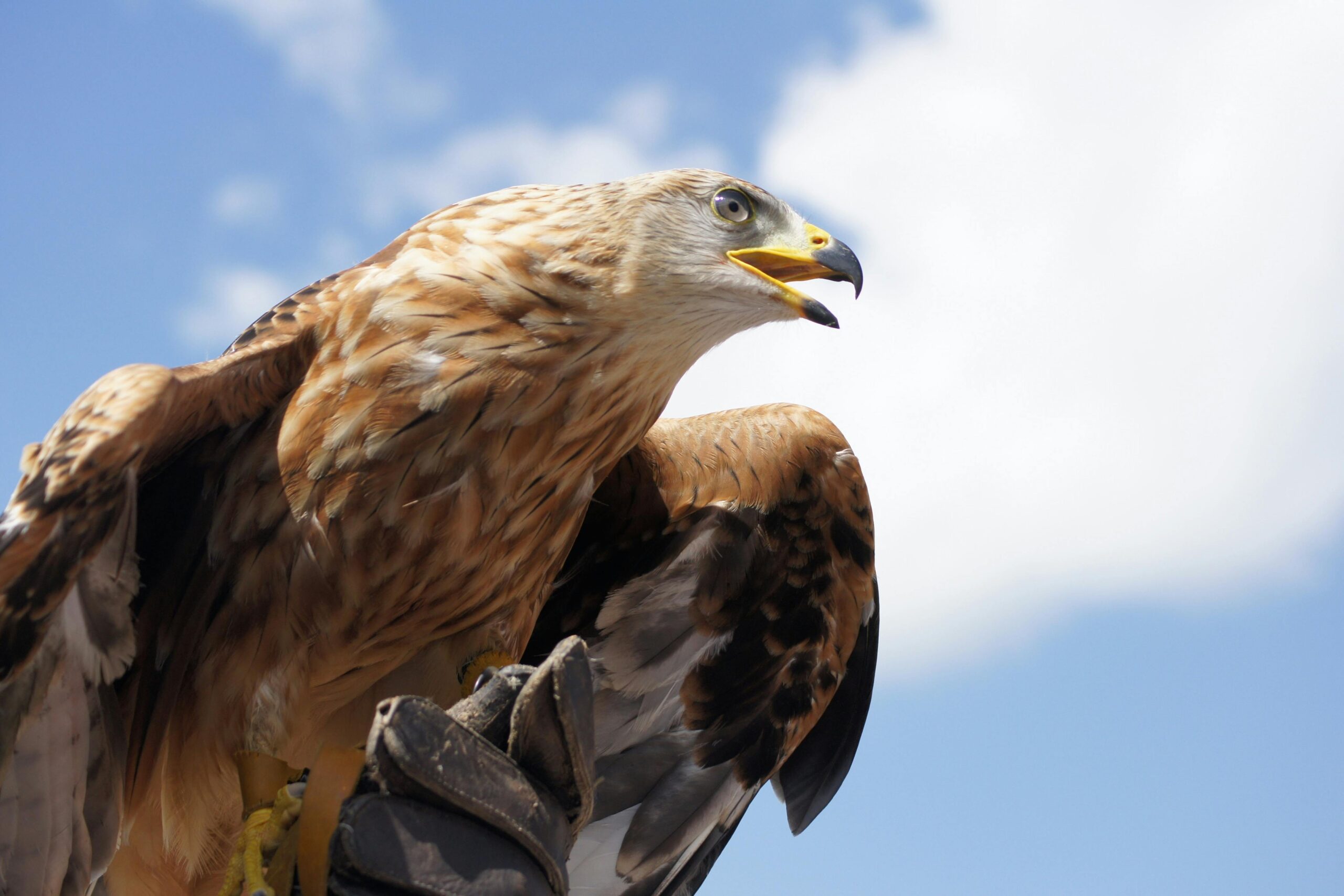For animal enthusiasts seeking advanced details and specifications about the Golden Eagle and the Fish Eagle, this comprehensive comparison will provide a thorough analysis of both species, focusing on their unique features, behaviors, habitats, and other quantifiable details.
Description and Identification
The Golden Eagle (Aquila chrysaetos) is a large bird of prey with a wingspan of 6 to 7 feet (1.8-2.1 m) and a weight of 8 lbs (3.6 kg) for females and 6 lbs (2.7 kg) for males. They have a distinctive golden-brown plumage on their napes and backs, with white patches on their wings and tails. Their eyes are a dark brown color, and they have a powerful hooked beak for tearing flesh from their prey.
Fish Eagles, on the other hand, are a group of large birds of prey that specialize in hunting fish. They belong to the subfamily Haliaeetinae and include species such as the African Fish Eagle, the Madagascar Fish Eagle, and the Steller’s Sea Eagle. Fish Eagles have a wingspan of up to 7 feet (2.1 m) and a weight of up to 15 lbs (6.8 kg) for females and 10 lbs (4.5 kg) for males. They have a distinctive white head and tail, with dark brown or black bodies and wings. Their eyes are yellow, and they have a powerful hooked beak for tearing flesh from their prey.
Habitat and Distribution
Golden Eagles are found in the northern regions of the entire northern hemisphere, including Alaska, Canada, and Eurasia. They prefer open habitats such as prairies, tundra, open wooded country, and barren areas, particularly in hilly or mountainous regions. They are known to build large nests, called eyries, on cliffs or in trees, which can be up to 10 feet across (3 m) and 4 feet thick (1.2 m).
Fish Eagles, on the other hand, are found in various parts of the world, including Africa, Asia, and North America. They prefer habitats near rivers, lakes, and reservoirs, where they can easily hunt for fish.
Behavior and Diet
Golden Eagles are opportunistic hunters, feeding mainly on ground squirrels, hares, and birds such as cranes, owls, and ptarmigans. They are also known to kill large game animals, such as Dall sheep lambs, but such instances are rare. They have been observed to lift up to 4 lbs (1.8 kg) in flight, although they can carry slightly more with the help of airspeed.
Fish Eagles, on the other hand, are specialized hunters that primarily feed on fish, which they catch with their barbed feet adapted for grasping slippery prey. They have been observed to hunt cooperatively, with one bird dive-bombing the water to scare fish towards the other bird, which then catches the fish in its talons.
Comparison
While both the Golden Eagle and the Fish Eagle are large birds of prey, there are several key differences between them:
| Characteristic | Golden Eagle | Fish Eagle |
|---|---|---|
| Size and Weight | Wingspan: 6-7 feet (1.8-2.1 m) Weight: 8 lbs (3.6 kg) for females, 6 lbs (2.7 kg) for males |
Wingspan: Up to 7 feet (2.1 m) Weight: Up to 15 lbs (6.8 kg) for females, 10 lbs (4.5 kg) for males |
| Plumage | Golden-brown plumage on napes and backs, with white patches on wings and tails | White head and tail, with dark brown or black bodies and wings |
| Habitat and Distribution | Northern regions of the northern hemisphere, including Alaska, Canada, and Eurasia Prefer open habitats such as prairies, tundra, and mountainous regions |
Various parts of the world, including Africa, Asia, and North America Prefer habitats near rivers, lakes, and reservoirs |
| Behavior and Diet | Opportunistic hunters, feeding mainly on ground squirrels, hares, and birds Can lift up to 4 lbs (1.8 kg) in flight |
Specialized hunters that primarily feed on fish Hunt cooperatively, with one bird dive-bombing the water to scare fish towards the other bird |
Real-Life Incidents and Statistics
In a study of Golden Eagle diet in Alaska, it was found that their primary prey items were ground squirrels, hares, and birds, with fish making up only a small percentage of their diet. In contrast, a study of Fish Eagle diet in South Africa found that fish made up over 90% of their diet, with birds and mammals making up the remainder.
In terms of hunting behavior, Fish Eagles have been observed to hunt cooperatively, with one bird dive-bombing the water to scare fish towards the other bird, which then catches the fish in its talons. Golden Eagles, on the other hand, have been observed to hunt both individually and cooperatively, with pairs of eagles working together to hunt larger prey such as Dall sheep lambs.
Conclusion
Understanding the key differences between the Golden Eagle and the Fish Eagle can help animal enthusiasts better appreciate the unique features and behaviors of these magnificent creatures. While both are large birds of prey, their specialized adaptations and hunting strategies make them distinct and fascinating subjects of study.
References
- African Fish Eagle. (n.d.). National Geographic. Retrieved April 22, 2024, from https://www.nationalgeographic.com/animals/birds/a/african-fish-eagle/
- Golden Eagle. (n.d.). National Audubon Society. Retrieved April 22, 2024, from https://www.audubon.org/field-guide/bird/golden-eagle
- Fish Eagle. (n.d.). The Peregrine Fund. Retrieved April 22, 2024, from https://www.peregrinefund.org/explore-raptors-species/fish-eagle




